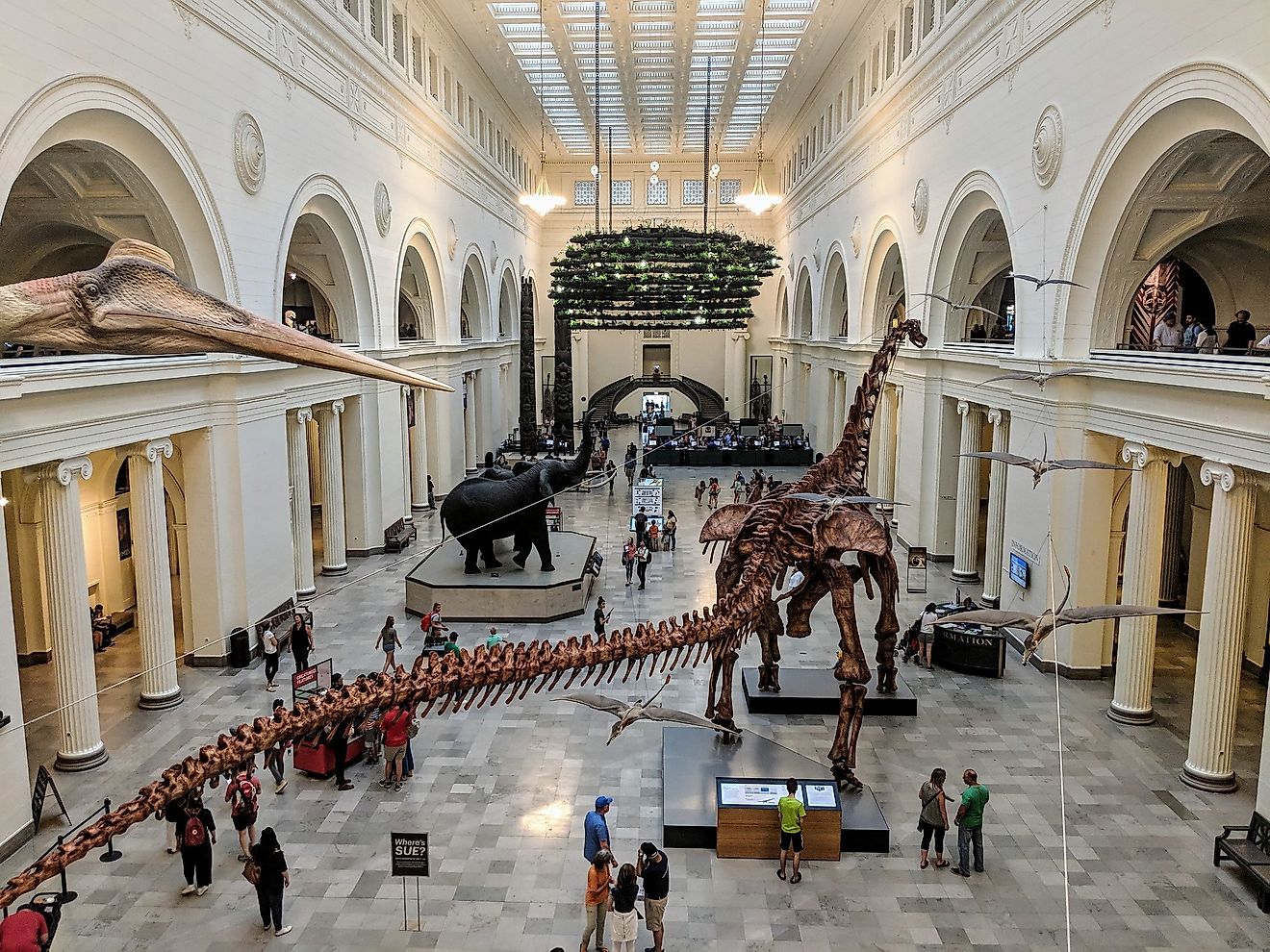10 Best Natural History Museums Around The Globe

- Maximo the Titanosaur, on display at Chicago's Field Museum, is the largest dinosaur ever discovered.
- Beijing Museum of Natural History is the first large scale natural history museum of its kind in China.
- London's Natural History Museum dates back to 1753.
- Today most natural history museums incorporate the latest in technological features with many offering a 3D cinema for an enhanced experience.
No travel itinerary is complete without a visit to one of the natural history museums dotted around the globe. From fossils to fungi and climatology to paleontology, these galleries cover it all. Many specimens give a look into the natural history of the region in which they’re located, with most offering an awe-inspiring dinosaurs section – always a crowd-pleaser. Today most natural history museums incorporate the latest in technological features with many offering a 3D cinema for an enhanced experience. Take a look at our list of top natural history museums around the globe for your next urban adventure.
10. Beijing Museum of Natural History, • Beijing, China

Known as the first large scale natural history museum of its kind in China, Beijing Museum of Natural History is the perfect stop to educate the little ones. Along with specimens of mammals and fossils, the kids are sure to enjoy the dinosaur exhibit, complete with robotic and roaring examples of prehistoric creatures. The learning experience for youngsters continues with an aquarium full of marine life native to South China.
9. Melbourne Museum • Melbourne, Australia

The Melbourne Museum enables visitors to dive into Australian’s natural history through a wide collection of artifacts. The museum is relatively new, having only opened in 2000. The displays offer everything one would expect in a visit to a natural history museum with additional exhibits about the human body. After a day of touring, visitors can take a relaxing stroll outside through the tropical gardens located on the grounds.
8. Natural History Museum •Vienna, Austria

Vienna’s Natural History Museum is among the largest museums in Austria offering something for visitors of all ages. The detailed architecture of the building, carved in marble and limestone, is reason enough to tour the institution. The museum offers visitors an array of animals, minerals, insects, mammals, and birds. There is an extensive dinosaurs exhibit to explore along with an informative section about space exploration.
7. La Plata Museum • La Plata, Argentina

Located outside Buenos Aires, La Plata is home to one of the world’s most intriguing museums. Visitors will be treated to an introduction into the region’s natural history, covering paleontological, anthropological, and archeological studies. La Plata Museum offers exhibits about the indigenous people of Argentina including the aboriginal tribespeople. Of course, there are exhibits about the dinosaurs that once roamed the area. Not all the attractions are indoors, the museum also hosts a Botanical Garden and Zoo.
6. Field Museum•Chicago, Illinois

Dinosaur enthusiasts of all ages would enjoy a trip to Chicago’s Field Museum to meet Maximo the Titanosaur – the largest dinosaur ever discovered. Maximo isn’t the only dinosaur attraction the museum has on tap. Sue, the world’s most intact Tyrannosaurus Rex is also on display at Field Museum. In addition to the extensive dinosaurs exhibits. Field Museum is home to an impressive display of Egyptian and South American artifacts. Don’t miss the Bug Encounter arena, where visitors can learn all about the insect world.
5. The French National Museum of Natural History • Paris, France

The French National Museum of Natural History encompasses 14 sites. The main location is located in Paris’s left bank of the River Seine. Founded during the French Revolution, its history dates back to 1793. There are over 60 million specimens for visitors to view covering everything from geology, botany to zoology, and anthropology.
4. National Museum of Natural History • Washington, DC

This well-known museum is located in the National Mall and is part of the Smithsonian Institution. The gallery holds an extensive collection of historic and human artifacts along with an impressive display of prehistoric creatures. One of the main attractions within the museum is its collection of gems and minerals, featuring the Hope Diamond, a 45.52-carat piece known around the world. National Museum of Natural History is a must-see for any visitor to DC, and admission is free.
3. Museum of New Zealand (Te Papa Tongarewa) • Wellington, New Zealand

A relatively new cultural experience, Te Papa Tongarewa opened in 1998, after merging with both the National Museum and the National Art Gallery. Appropriately named, Papa Tongarewa it translates to Container of Treasures. The exhibits focus on artifacts indigenous to New Zealand. With an eclectic display of categories, Te Papa Tongarewa offers visitors a look into history, Pacific cultures, natural history, and art.
2. American Museum of Natural History • New York, New York

The American Museum of Natural History is located on Manhattan’s Upper West Side. This New York City landmark is one of the largest natural history museums in the world. It’s home to such a massive collection that only a small sampling can be displayed at one time. The museum is known worldwide for hosting sleepovers within the museum, where visitors can spend the nite among the dinosaurs. The museum was the inspiration for the 2006 film, Night at the Museum, starring Ben Stiller.
1. Natural History Museum • London, England

London’s Natural History Museum was once associated with the British Museum. This institution is deeply rooted in British history dating back to 1753. In 1881, the iconic museum moved to its present location. Now located on Exhibition Road in South Kensington, the structure is one of three major museums in the area. The gallery houses a vast collection of life and earth sciences divided into five collections: botany mineralogy, entomology, paleontology, and zoology. A top attraction for visitors is the Charles Darwin collection.











